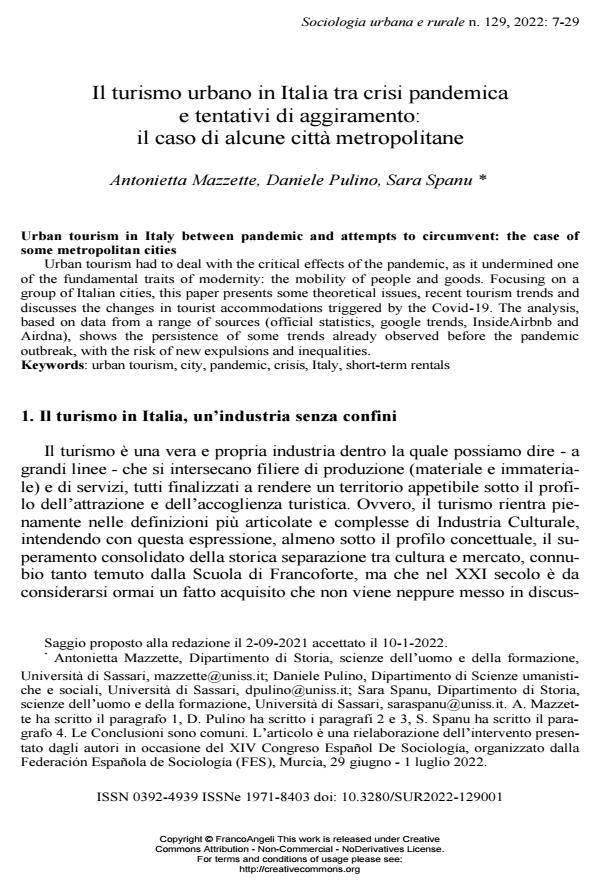Urban tourism in Italy between pandemic and attempts to circumvent: the case of some metropolitan cities
Journal title SOCIOLOGIA URBANA E RURALE
Author/s Antonietta Mazzette, Daniele Pulino, Sara Spanu
Publishing Year 2022 Issue 2022/129
Language Italian Pages 23 P. 7-29 File size 352 KB
DOI 10.3280/SUR2022-129001
DOI is like a bar code for intellectual property: to have more infomation
click here
Below, you can see the article first page
If you want to buy this article in PDF format, you can do it, following the instructions to buy download credits

FrancoAngeli is member of Publishers International Linking Association, Inc (PILA), a not-for-profit association which run the CrossRef service enabling links to and from online scholarly content.
Urban tourism had to deal with the critical effects of the pandemic, as it undermined one of the fundamental traits of modernity: the mobility of people and goods. Focusing on a group of Italian cities, this paper presents some theoretical issues, recent tourism trends and discusses the changes in tourist accommodations triggered by the Covid-19. The analysis, based on data from a range of sources (official statistics, google trends, InsideAirbnb and Airdna), shows the persistence of some trends already observed before the pandemic outbreak, with the risk of new expulsions and inequalities.
Keywords: urban tourism, city, pandemic, crisis, Italy, short-term rentals
Antonietta Mazzette, Daniele Pulino, Sara Spanu, Il turismo urbano in Italia tra crisi pandemica e tentativi di aggiramento: il caso di alcune città metropolitane in "SOCIOLOGIA URBANA E RURALE" 129/2022, pp 7-29, DOI: 10.3280/SUR2022-129001